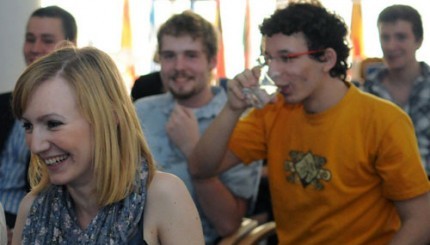
Just considering statistics, young people should really not be a priority in European politics. Less than 1/5th of the total population in the EU-28 are aged 15 to 29 years and the number has been declining for decades. No wonder really that youth-related issues are often falling off the table and topics such as pension reforms and health care are on top of the political agendas. On the other hand, politicians love to say “Young people are the future” – but are they doing enough to give young people perspectives for the years to come?
The European youth has greatly suffered under the consequences of the economic crisis affecting Europe in the last years. Looking at the latest data available, youth unemployment reached a peak in 2012 with 18.2 % of young people out of work. Just looking at the age group of 15-24 years, the situation is even more severe, with 22.8 % unemployed young persons. Evidently, some countries are worse off than others, such as Spain (53.2%) and Greece (55.3%). Germany, Austria and the Netherlands are among the countries with the lowest youth unemployment rate, figuring between 8-10%, which is not insignificant either.
It is however important to look beyond these statistics and also talk about those young people who are not represented by them. Thus, young people who have a job, often are involved in so-called “precarious employment” with temporary contracts (42%) or part-time jobs (31%).
While unemployment and employment rates are frequently discussed in media and politics, a relatively new phenomenon is gaining more and more recognition as well: young people not in employment, education or training – better known under the abbreviation NEETs.
In fact, the traditional employment indicators are often criticized as lacking relevance to young people. The youth unemployment rate calculates the part of jobless young people among those that are “economically active” and not the unemployed among the whole youth population. However a great part of youngsters are not (yet) part of the economically active population, as they are studying or following other activities outside the job market (such as volunteering or engaging in art, caring for a family member, recovering from illness etc). Many young people are also not eligible for unemployment benefits or do not register for them because of the stigmatization that often comes with it. Others have been actively looking for a job and got discouraged and gave up. Consequently all these youngsters do not figure in the unemployment statistics.
The NEET rate on the other hand calculates the part of young people out of work and not following education or training among the whole youth population and thus captures those young people who tend to be forgotten. In 2012 over 7.5 million young Europeans aged 15-24 were NEETs and the trend goes upwards. While there is a share of “voluntary” NEETs (i.e. young persons travelling or dedicating time to art or auto-didactic learning) many of them are willing to work or to receive further education or training, but are unable to find appropriate offers.
The aim of politicians should not be to reduce the unemployment rates no matter what. They should listen to the demands and proposals of young people so as to better understand their situation and to come up with solutions that really have an impact. Unemployed youth and NEETs have to be tackled today – so that Europe and its youth have a future.



